S.N. Vlasyev. Mortar inventor
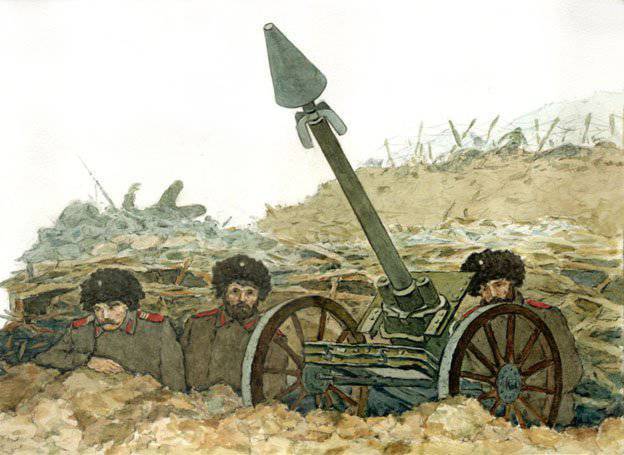
In one of the November days, officers of the Japanese army looked at the fragment of an unknown projectile in surprise. Hurricane artillery fire has just ended. All the clever digging, which the Japanese had built for two months, approaching fort No. 2, was destroyed in half an hour. Russian fired from some unknown guns. Even the sound of a shot from them was unusual. The fortress guns booted rollingly and loudly. It was well known to the Japanese and the dry crackling of sea guns. New Russian guns sounded deafeningly loud, and the high sound vibrated for a long time and rang in the air. And the most important thing: no shelters saved, amazing shells along a steep trajectory skirted all obstacles and fell as if from the sky. Japanese soldiers dubbed them the "flying death."
Great was the surprise of the Japanese when they discovered that the Russians were firing mines! Mines on land ?! Incredible! But that was exactly the case. The Russians had a new formidable weapon - a mortar. Its creators were midshipman Sergei Nikolaevich Vlasyev and captain Leonid Nikolayevich Gobyato.
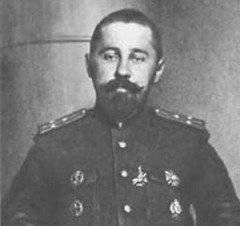 S.N. Vlasyev was born 18 May 1880, in Yaroslavl. He graduated from the Marine Corps founded by Peter I. Graduates of this privileged naval educational institution were the famous naval commanders and navigators - Ushakov and Senyavin, Lazarev and Nakhimov, Krusenstern and Lisyansky, the writer Stanyukovich, composer Rimsky-Korsakov, the inventor of the aircraft Mozhaisky.
S.N. Vlasyev was born 18 May 1880, in Yaroslavl. He graduated from the Marine Corps founded by Peter I. Graduates of this privileged naval educational institution were the famous naval commanders and navigators - Ushakov and Senyavin, Lazarev and Nakhimov, Krusenstern and Lisyansky, the writer Stanyukovich, composer Rimsky-Korsakov, the inventor of the aircraft Mozhaisky.The Russo-Japanese War found midshipman Vlasyev in Port Arthur, where he served as a junior officer at the mine-laying vessel Yenisei. Already on the second day of the war, the Yenisei was sent to Talienvan Bay to install barricades. The minelayer successfully completed the combat mission, but the ship was demolished by an underwater current unknown to the Russian sailors to its own mine. After the explosion, the ship began to sink. Boats for all not enough. People swam in the icy water to the shore. The commander of the "Yenisei" captain second rank V.A. Stepanov (he is the designer of this ship), on the ancient maritime tradition, remained on the bridge and, until the last minute, ordered the descent of lifeboats and other rescue equipment.
Vlasyev’s military service began with this sea tragedy. After the death of the Yenisei, he was transferred to the battleship Peresvet, on which an indecisive and overly cautious junior flagship, rear admiral Prince Ukhtomsky, held his flag. Vlasyev witnessed the tragic death of the beloved talented naval commander S.O. Makarov on the battleship "Petropavlovsk". He was in the famous 10 battle of August 1904 of the year in the Yellow Sea, when the attempt to break through the squadron from Port Arthur to Vladivostok failed. Commander Squadron Rear Admiral Witteft was killed, and Prince Ukhtomsky cowardly turned to Port Arthur. More squadron no longer went to sea. While languishing from inaction, indignant at the commander’s passive tactics, Vlasyev more than once went as a volunteer to plant minefields “with rafts” - it was a dangerous and risky undertaking. For military distinctions, Vlasyev was awarded the Order of Anna 4 degree with the inscription: "For courage."
There was a “benzinka” in Port Arthur - an old submarine of the Drzewiecki system, built back in the 1881 year. Here on this boat Vlasyev was going to go to sea. In his book "Year of War" writer V.I. Nemirovich-Danchenko leads Vlasyev's conversation with naval officers:
- I would have gotten close to the Japanese on our “gas station”. No pipes, no mast — you will not see it anywhere, but mines on it are healthy.
- Hush, ask ...
- Thank you dutifully. Our commanding fathers have only one answer: “Please, gentlemen, without adventures. You will need it in due time. ”
- This is when all of us will be reheated ...
And yet Vlasyev applied for permission to go to sea to the recently accepted command of Rear-Admiral Viren. Nemirovich-Danchenko describes the consequences of this request with the words of the Chinese workers who observed this scene in the port: “Then the bolisoy captain with one fly was very, very angry, stamped his feet, and blew bubbles with his mouth”. “One Fly” is a two-headed eagle on the shoulder straps of Rear Admiral. Admiral Viren chose to sink the fleet in the harbor rather than go into battle.
IN AND. Nemirovich-Danchenko wrote about Vlasyev that he "always kept that brave battle look, damn it, which I liked so much about him."
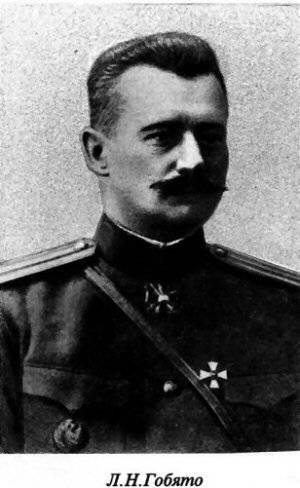 When the position of the besieged Port Arthur became very difficult, Vlasyev was assigned to the second naval landing. With a company of sailors, he came to the fort number 2. The Japanese trenches approached the Russian positions at very close distances. This did not allow artillery to fire on them. Enemies remained almost invulnerable. It was then that Vlasyev came up with the idea of creating an artillery weapons for conducting close combat. The idea was to shoot from a light small-caliber cannon with pole mines. Sergey Nikolayevich expressed his thoughts to General R.I., Chief of the Land Defense of Port-Artur. Kondratenko, who introduced Vlasyev to captain Leonid Nikolayevich Gobyato - a young talented engineer, the head of serf artillery workshops. Leonid Nikolaevich highly appreciated the midshipman’s project, proposed a number of improvements, and the work boiled over. In the difficult conditions of the besieged fortress S.N. Vlasyev and L.N. Gobyato created a remarkable new weapon - the world's first mortar.
When the position of the besieged Port Arthur became very difficult, Vlasyev was assigned to the second naval landing. With a company of sailors, he came to the fort number 2. The Japanese trenches approached the Russian positions at very close distances. This did not allow artillery to fire on them. Enemies remained almost invulnerable. It was then that Vlasyev came up with the idea of creating an artillery weapons for conducting close combat. The idea was to shoot from a light small-caliber cannon with pole mines. Sergey Nikolayevich expressed his thoughts to General R.I., Chief of the Land Defense of Port-Artur. Kondratenko, who introduced Vlasyev to captain Leonid Nikolayevich Gobyato - a young talented engineer, the head of serf artillery workshops. Leonid Nikolaevich highly appreciated the midshipman’s project, proposed a number of improvements, and the work boiled over. In the difficult conditions of the besieged fortress S.N. Vlasyev and L.N. Gobyato created a remarkable new weapon - the world's first mortar.His device was simple, but very original. For shooting, a trimmed light gun was used, mounted on a wheeled carriage adapted for shooting with large elevation angles. From a sheet of iron they riveted the cone-shaped hull of a mine, filled it with pyroxylin and supplied it with a fuse. A wooden pole was attached to the tail of the case, with a freely moving impeller stabilizer mounted on it. A wooden pole was inserted into the barrel bore from the barrel. The mine remained outside the channel and the impeller-stabilizer shifted to it when charging along the pole. From the treasury, the gun was charged with a normal sleeve, covered with a wooden cork insert with lead lead. When fired, the cork with the wad struck the pole and pushed the mine.
Russian soldiers lovingly called the mortar "frog". Alas, the new weapon did not meet with the support of the Main Artillery Directorate and the "most august" general inspector of artillery of Grand Duke Sergei Mikhailovich. The generals called the mortars "artillery substitutes", "toy guns", "guns that have no future." As a result of this misunderstanding, the Russian army did not have mortars at the beginning of the First World War. But in the course of the war, German troops began to use such weapons, although their mortars were very bulky and heavy - up to 800 kilograms and weights. Only then did they remember the invention of Vlasyev and Gobyato. The Supreme Commander of the Russian Army, Grand Duke Nikolai Nikolayevich, informed the Minister of War General Sukhomlinov: "The infantry insistently demands mortars, considering them to be their artillery."
During the war in Russia were released several thousand mortars (not counting the improvised, created at the front). Their weight did not exceed 90 kilograms. New weapons finally received recognition.
Unfortunately, L.N. Gobyo, who was a professor at the military academy at that time, did not live to see the triumph of his ideas. At the very beginning of the war, Lieutenant-General Gobyato went to the front. Leonid Nikolayevich died in the year 1915, commanding the defense of the northwestern region, proud of Przemysl. L.N. buried Gobyato in the village of Morozov-Borki, Ryazan Region. Subsequently, an obelisk in the form of a stele with a model of an over-caliber mine was installed on his grave. During the First World War, under the leadership of Leonid Nikolayevich served Captain A.M. Karbyshev, the future Hero of the Soviet Union, Lieutenant-General of the engineering troops and professor of the Military Academy of the General Staff.
But back to Vlasyev. On the night of January 2, 1905, literally on the eve of the surrender of the Port Arthur to the Japanese, Sergei Nikolayevich, breaks through the enemy’s blockade in a mine boat. Having escaped captivity, he arrives at the Chinese port of Chief. After the end of the war, Vlasyev commanded the submarine Mackrel. In those years, submariners were perceived as "suicide bombers." So to the question about the increase in salary for the underwater composition, the minister of the sea, Birilyov, cynically declared: “You can add ... Anyway, they will all be overwhelmed soon.”
About the possibilities of underwater fleet There were heated debates in the world. The Englishman Ganney declared: "The submarine is a highly entertaining toy." Lord Goshen echoed him: "In a naval war with submarines there is nothing to be considered." In Germany, the famous Admiral von Tirpitz said: "German submarines are not needed!" There were, however, other opinions. The English admiral Scott said: "As a car displaced a horse on land, so a submarine will displace armadillos."
In the highest military circles of tsarist Russia, they looked skeptically at the submarines. The famous military thinker Alexander Dmitrievich Bubnov stated: "In the open sea, submarines have no combat significance." And Admiral Kolchak, famous for his modern films, said that there were no submarines in the fleet at all.
The young officers Vlasyev, Riznich, Podgorny, Tieder, Krzhizhanovsky spoke in defense of the submarines. M.M. Thieder shrewdly stated: “Submariners are sailors of the future!” “Russia's sea power is inevitably associated with the development of the submarine fleet,” said S.N. Vlasyev.
The maritime department decided to debate simply. Disturbators of calm Riznich and Tiedera simply expelled from the fleet! Vlasyev, who did not allow personal attacks against the bigwigs of the ministry, survived. But he continued to fervently fight for the construction of large submarines, for the massive use of submarines in battle. In response, he received a reprimand from Nicholas II himself for intervening "in prerogatives that did not belong to him."
However, by this time Vlasyev already had a solid reputation as one of the best submariners in Russia. The intercession of the largest Russian shipbuilder, a world-renowned scientist A.N. Krylov. In the 1907 year, Vlasyev is appointed commander of the Shark submarine under construction. In the process of its construction, Sergey Nikolaevich proposed and implemented numerous improvements. He compiled a complete description of this submarine. His authority was so strengthened that he was invited to construct the mine barriers of the world's first underwater mine layer “Crab”. Vlasyev summarized the experience of sailing small submarines and justified the need to build larger ones. His comments were taken into account when building a serial large submarine type "Bars".
On the first day of World War "Shark" went into a sentinel voyage. Already in August, 1914, north of Gotland, the submarine attacked two German destroyers. In Danzig Bay 22 in October, 1914 of the year sank the German transport, and 17 in December of the same year, the cruiser Augsburg torpedoed at Gotland. The watch journal “Sharks” amazes with the saturation of the boat’s combat trips throughout the year.
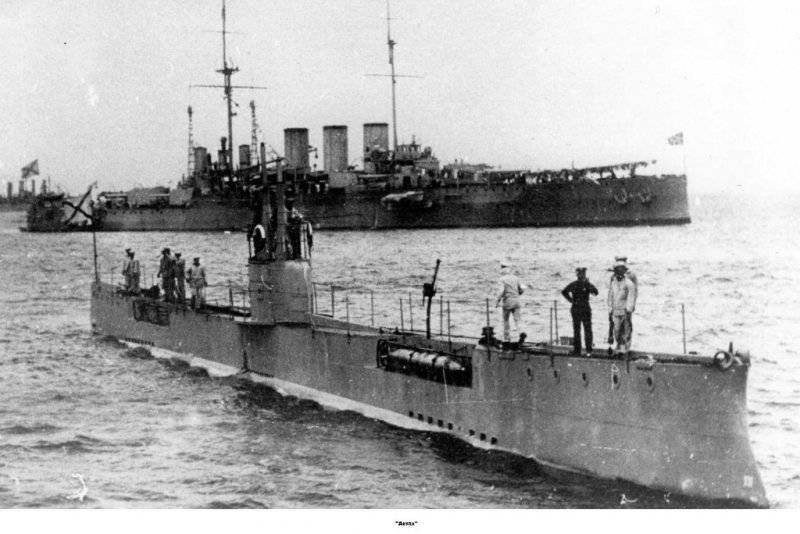
In March, 1915 was awarded Vlasyev with a military order “For Excellent Patrol Service in the Battle Area”, then was appointed to command the 1 division of submarines.
But suddenly Sergei Nikolaevich had to part with the "Shark", which he commanded for eight years. 29 May 1915, he is appointed commander of the mine layer “Narova”. On the one hand, it seemed to be an increase (assigned to a larger ship!), On the other hand, it was an obvious disgrace - they did not give command of a new large Bars-type submarine.
And 28 September 1915 of the year was declared an order for the Maritime Office for number 1479: “On confirmation of the Northern Front, the sentence of the serf court of the Sea Fortress of Emperor Peter the Great (in Reval) was defined: 9 and 1455 “Penalty and Correctional Penalties”, subject to imprisonment in the fortress for one year and four months with restriction of certain rights and advantages in the service ”.
What happened to S.N. Vlasyev? What was his "criminal act"? It turns out that on August 8, during a quarrel, Vlasyev shot from a regular weapon and injured doctor V.V. Chizhov. Fortunately for Vlasyev, the execution of the sentence was postponed until the end of the war.
In October, Sergey Nikolaevich 1915 was seconded to the Black Sea Fleet transport fleet. In it, he served until January 1919. In 1920, the ships of the transport flotilla Vlasiev arrived in Constantinople. Later he moved to Paris, where he led an unremarkable life. Died S.N. Vlasyev 3 September 1955 of the year.
Sources:
Merkushov V. Notes of the submariner 1905-1915. - M .: Consent, 2004. C. 11-12, 183-185, 354,456.
Nepomniachtchy N. 100 great mysteries of the XX century. - M .: Veche, 2004. C. 276-279.
Cherkashin N. Fate of the sea mysterious ligature. - M: Military Publishing, 1990. C. 31, 48.
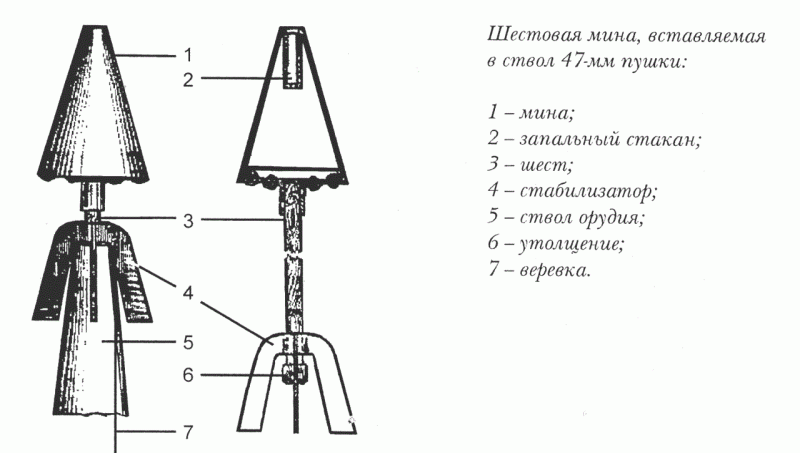
Information